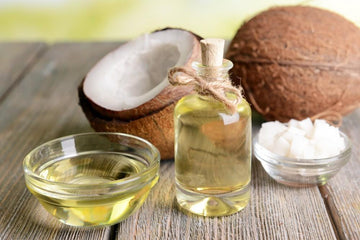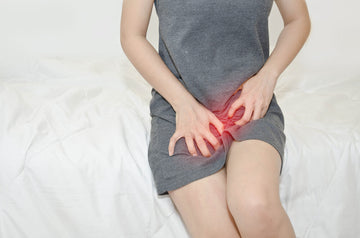Postpartum pads are essential items for new mothers as they navigate postpartum wellness and recovery after childbirth. During the postpartum period, the body undergoes tremendous adjustments, which include the loss of the uterine lining, which ends up in postpartum bleeding, called lochia. This bleeding can last for several weeks and requires special care and attention. Unlike regular menstrual pads, maternity pads are specifically designed to address heavy flow and longer periods of bleeding that new mothers enjoy. Understanding the importance of selecting suitable postpartum pads and knowing how to use them well results in quick recovery from the postpartum period.
How Postpartum Pads Helps In Postpartum Recovery?
Postpartum pads are an important element in the recovery process following childbirth, offering comfort, hygiene, and peace of mind for mothers. Designed to handle the heavier and long-lasting bleeding known as lochia, these pads offer superior absorption compared to regular menstrual pads. They help to manipulate the preliminary heavy flow and progressively lower discharge. This effective absorption protects against leaks, promotes cleanliness, and reduces the chance of infection by keeping the vaginal place dry and loose from extra moisture.
Many maternity pads are made with soft, hypoallergenic substances that are gentle on sensitive skin, supplying additional comfort all through a time while the frame is restored from the bodily strain of childbirth, along with feasible perineal tears, episiotomies, or cesarean incisions. The maternity pads play an essential role in supporting bodily recuperation and providing an experience of protection for the duration of postpartum duration, contributing to extra snug and comfort for new moms.
Uses Of Postpartum Pads
Managing Postpartum Bleeding (Lochia)
In the days following childbirth, bleeding is regularly heavier than a regular menstrual period. Postpartum pads are designed to take in this heavy flow, supplying adequate safety and comfort. These pads provide the essential absorption for the lighter flow that can persist for several weeks.
Ensuring Hygiene
Postpartum pads help prevent infections by keeping the vaginal area smooth and dry, particularly after perineal tears, episiotomies, or cesarean incisions. They also reduce the risk of microorganisms getting into sensitive areas during healing. Maternity pads also help maintain cleanliness and hygiene, crucial for normal fitness and recuperation.
Comfort and Protection
Postpartum pads are often made from smooth, hypoallergenic materials that are gentle on sensitive pores and skin. This is mainly essential because the vaginal area may be smooth and sore after childbirth and vaginal hygiene and comfort are essential after delivery.
Convenience and Ease of Use
Most maternity pads are disposable, making them easy to use and dispose of. This is especially handy for new mothers with limited time and energy.
Why Does Postpartum Bleeding Occurs After Child Birth?
Postpartum bleeding, called lochia, happens after childbirth as the body undergoes a method of healing. During pregnancy, the uterus expands significantly to accommodate the developing baby, and the uterine lining thickens to offer a nourishing environment. After childbirth, the body starts to shed this lining along with any blood and tissue that helps the pregnancy. The contraction of the uterus facilitates this shedding method.
Additionally, the placenta becomes connected to the uterine wall and allows it to heal, which also contributes to postpartum bleeding. The initial stage is typically heavy and bright red, gradually turning out to lighter bleeding or spotting over several weeks. This is a natural and necessary process, helping to clean out the uterus's ultimate waste.
Effects Of Postpartum Bleeding
Postpartum bleeding, while a normal part of the healing procedure, will have widespread mental outcomes for new moms. The experience of bleeding, mixed with the adjustment in the body and hormonal imbalances that occur after childbirth, can contribute to emotions of vulnerability and anxiety. This anxiety can be compounded with the aid of the body pain and fatigue that regularly accompany the postpartum duration, making it tough for new mothers to relax and get better.
Choosing The Right Postpartum Pads
Choosing the right maternity pads is an important consideration for postpartum recovery, as they provide comfort and hygiene at some stage during physical changes. The choice among disposable and reusable maternity pads depends on private desire, convenience, and environmental worries.
Disposable maternity pads are frequently chosen for their convenience. They are easy to use and dispose of, making them ideal for fast postpartum recovery while frequent adjustments are needed. They commonly provide high absorbency and are easily available in stores. On the other hand, reusable maternity pads are an extra sustainable and green choice.
Made from soft, breathable materials, they can be washed and reused, lowering waste and long-term costs. Ultimately, the selection relies on the character's way of life, comfort alternatives, and dedication to environmental sustainability.
Which Sort of Postpartum Pad is convenient after a C-section?
After a C-section, convenience, and luxury are key considerations when choosing maternity pads. Disposable maternity pads are commonly extra convenient for this period due to their ease of use and excessive absorbency, important for dealing with postpartum bleeding. They are designed for single use, making them ideal for frequent adjustments without the trouble of washing and drying, which is particularly beneficial. At the same time, mobility is probably restrained due to the surgical incision.
Additionally, disposable pads often feature softer substances and higher moisture-wicking residences, presenting additional comfort and lowering the threat of incision inflammation. While reusable pads are an extra sustainable option, they'll no longer offer identical convenience immediately after surgery, particularly considering the requirement for common changes and extra laundering purposes. Therefore, for the maximum number of women improving from a C-section, disposable maternity pads are typically more convenient and realistic preference, offering consolation and hygiene.
Promoting Health and Lifestyle in Postpartum Recovery
Promoting health and a balanced lifestyle during postpartum recovery is crucial for new mothers. This period, often called the "fourth trimester," involves significant physical, emotional, and hormonal changes. A holistic approach to recovery includes proper nutrition, adequate hydration, and gradual physical activity, which can help develop the individual's condition.

Focusing on mental health is equally essential; new mothers should prioritize rest, seek support from family and friends, and consider professional help if experiencing symptoms of postpartum depression or anxiety. Establishing a routine that balances self-care with baby care can help ease the transition into motherhood, fostering a positive and healthy recovery process.
Conclusion
The postpartum pads are an important part of postpartum care, offering consolation and hygiene during an essential recovery period. Whether deciding on disposable or reusable options, it's critical to remember elements including absorbency, comfort, and environmental impact. Disposable pads provide ease of use and excessive absorbency, ideal for the immediate postpartum length, even as reusable pads offer a sustainable and price-powerful alternative. Understanding the advantages and uses of maternity pads, moms make correct decisions based on their personal preferences and choices, ensuring a smoother and more snug postpartum experience. The postpartum period can be challenging, yet following a good diet and health care routine can help to reduce the difficulties during the postpartum phase.
FAQ’s
Can I use regular menstrual pads instead of postpartum pads?
While regular menstrual pads can be used, they'll not offer enough absorbency and comfort throughout the preliminary heavy postpartum bleeding. Postpartum pads are designed to be extra absorbent and comfortable for touchy regions, making them a higher preference in the early postpartum days.
Are there different types of maternity pads?
Yes, maternity pads are available in different sizes and absorbency ranges. Some have extra-long lengths or wings for added safety, while others can be designed with cooling features for comfort. You can also discover organic or eco-friendly alternatives.
How often should I change maternity pads?
It depends on the flow, and it is recommended that maternity pads be modified every two to four hours or each time they become saturated. Frequent conversion facilitates saving you from infections and keeping you snug.
Can maternity pads cause irritation or discomfort?
Maternity pads are usually designed with sensitive skin in mind, but a few women can still experience infection. If this occurs, don't forget to switch to a distinct logo or type, including those made.
What should I do if I experience unusually heavy bleeding or other concerning symptoms?
If you experience heavy bleeding (soaking more than one pad per hour), large clots, dizziness, or other unusual symptoms, contact your healthcare provider immediately. These could be signs of postpartum hemorrhage or other complications.






